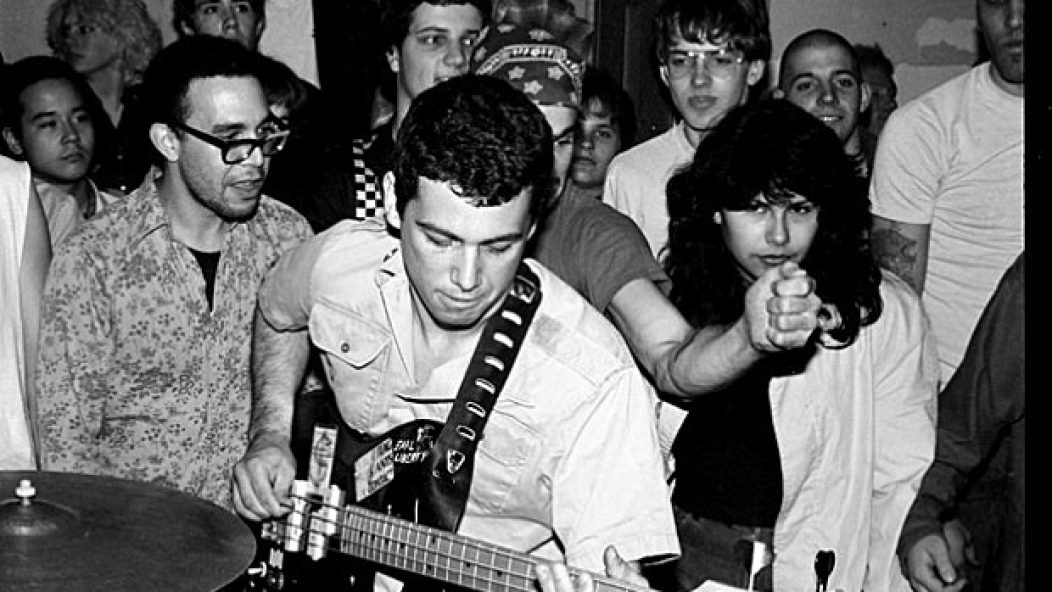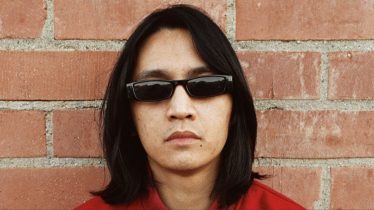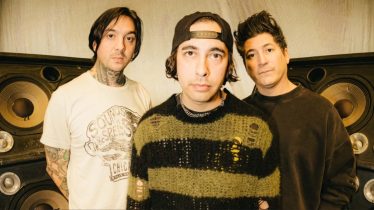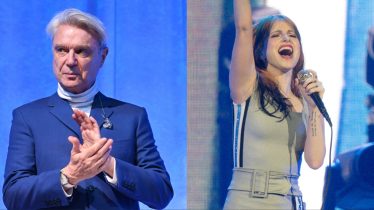
The Lead: WE GOT POWER!: ’80s L.A. Hardcore explored with fanzine author Jordan Schwartz
(above: Mike Watt of Minutemen playing Earl Liberty of Circle Jerks' bass guitar. Check out a full gallery of images here.)
When we last spoke with an author from Bazillion Points publishing, we got the inside scoop on the early days of metal pioneers like Metallica and Slayer. Now we catch up with WE GOT POWER! co-author Jordan Schwartz, who grew up making a fanzine of the same name that covered the 1980s L.A. punk and hardcore scene. (Hell—he was even on the cover of Black Flag’s Annihilate This Week EP.)
Along with lifelong friend David Markey, the two put together a stunning and beautiful collection of images from their fanzine and live shots from shows alongside essays from Henry Rollins, Keith Morris, Dez Cadena and a handful of other monumental figures from the scene. AP talked with Schwartz about the project’s history, technology’s effect on music and how the bands from that subculture—Suicidal Tendencies, Bad Religion, Adolescents—are important to a new generation of hardcore.
Interview: Matthew Colwell
 How did the idea for this book come about?
How did the idea for this book come about?
It all started over seven years ago over a Christmas vacation. Back in the day at We Got Power magazine, I’d buy 35mm black-and-white film in bulk, shoot it, develop it and make the prints for the magazine all on my own. [Co-author Dave Markey] knew I had a bunch of negatives laying around, so he said, “Hey, dude, bring some of your negatives, come over and let’s scan this stuff.”
My darkroom techniques weren’t very good, but the nice thing about digital technology [is that] even an ordinary scanner can pull nice images from a washed-out negative. So, we put the first couple film strips through it and noticed all of these amazing pictures coming up that we had basically forgotten about. We were like, “Damn. We’ve got to do a book.”
At that point, [Sonic Youth frontman] Thurston Moore owned the Ecstatic Peace book publishing firm, so we immediately sent him some of the photos because he was into all that L.A. hardcore stuff. He was interested, but it took him a few years to get us on track and by the time he was ready to go, Ecstatic Peace was over. We had seen [the Bazillion Points] release of [Touch and Go: The Complete Hardcore Punk Zine '79–'83,] so Dave reached out to [Bazillion Points founder] Ian Christe and boom, we were back on track.
You mention the power of technology helped spark this book’s creation. How do you think technology affects today’s version of fanzine culture?
Oh, it’s completely different. It becomes the issue of having too much data. These days with the right laptop, not only can you make and produce your entire fanzine, you can share it with the entire world in a matter of seconds, all while you record your own band and download every track from every band of the last 50 years as well.
Do you think that 20 years from now, small blogs will be remembered the same way fanzines are?
I guess the question is: do you know how to search? Do you know how to find it? There will be other sites that aggregate all of that, too. They’ll be the shoebox punk website archive.org-type thing where you can find all the cool, funky little punker blogs and what have you. These days it’s not going away; it’s about being able to find it and if people want to search for it.
In the book, you say that the record that got you into hardcore was actually the soundtrack to The Decline Of Western Civilization.
Yeah, up to that point, I was into the whole ska thing going on back then: the Specials, Madness, English Beat and Selector, but those were on major labels. Those were pretty easy to get. [I bought] the Decline record because it was a great deal.
Rhino Records was a short bus ride away and sitting right at the front was The Decline Of Western Civilization, a picture of dark trash lying on the stack, and my friends and I were like, “What the hell is this?” So, we buy that record and spin it. It’s an amazing record as far as it has these little dialogue snippets kind of explaining pieces, and then these really intense live tracks: Black Flag, Circle Jerks—just classic performances.
It’s touched on a little in the book, but a consistent theme when reading about the ’80s hardcore scene is the violence that surrounded it. As someone who was at those shows and knew the bands, can you describe what it was like?
The music was definitely high energy and very wound up. L.A. punk around ’77 or ’78 was a weird mix. It had a lot more art students and stuff like that. But as that stuff was happening in L.A., Greg Ginn and Keith Morris and [Chuck] Dukowski were starting Black Flag down at Hermosa Beach, which is all suburban stuff—not the crazy Hollywood stuff that everybody was so into. They were playing this really gnarly, more intense music, and then, of course, things from that scene spun off like Circle Jerks and Red Cross. So all these harder “core” bands are starting to pop up and they’re all young and playing really fast, hard stuff.
They’re playing to their peers in a sort of latchkey-kids-type thing. Skating was getting really radical in Santa Monica with the whole Dogtown and Z-Boys thing, which was very aggressive, vertical skateboarding out of pools—frontside grinds and stuff like that.
So, there were all these different forms of this heavy energy, and you get all of those people in some hall on a Saturday night, and that just sets the condition for an explosion, which manifested as slam dancing and stage-diving. Before that people were just smashing into each other like loose atoms, but that was it. We would just clear the space in front of the stage, a song would kick it off, and people would just blow up in front of the stage. People wanted to brawl. But if you knew how to hang, and you didn’t get too drunk or too belligerent and weren’t looking for it, you wouldn’t get beat up. The violence was there and it definitely made it interesting and exciting, but it’s not like everybody got beat up.
It seems like there was some tension between the punk and hardcore scenes, even though they were so closely related.
Part of the problem with it was you get this macho-man bullshit thing [with hardcore]. The music became more uniform and had to have certain parts to it: the slow part, the fast part, etc., so hardcore turned off the more artistic types. Then the first-gen punk guys didn’t want to go to the hardcore gig because they didn’t want to get beat up or fucking harassed or anything—why deal with that shit if the music is, in some respects, inferior? It’s a little degraded because it’s stuck in this rigid format. [Eventually] that formula got so rigid that there was nowhere to go, which kind of set up the post-hardcore scene, where these bands are trying to figure themselves out.
When we chatted with the author of Murder In The Front Row about the ’80s metal scene, an important point that was brought up is some of Alternative Press’ readers may not be familiar with the history and subculture you’re describing. Could you explain the significance that this subculture has and how it has paved the way for the current crop of bands they are familiar with?
Part of it is, in the pre-internet days, this was all very hard to get access to—even hearing it was a challenge. Yet, it was this huge thing in the early-to-mid-’80s. Black Flag could do six-month tours of the U.S., have multiple record labels putting out their albums, and occasionally making videos, and the only coverage they got was on the alternative or college radio station. That was the only place you could hear that stuff. People were listening, right? People were listening like Kurt Cobain [from Nirvana] and Billie Joe from Green Day [after hardcore ended], which is part of the commercial landscape now. It’s hard to turn on the radio—or even certain car commercials—now and not hear a riff that was ripped off from a hardcore punk band from that early-’80s scene. If you’re into any kind of alternative music today, you’ve got to be aware of the roots of that in U.S., which was that early-’80s scene.
You can pick up a copy of WE GOT POWER! here.







